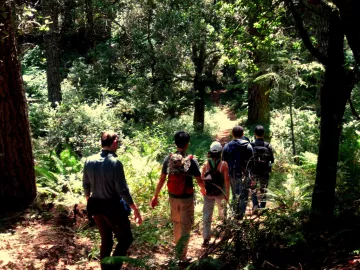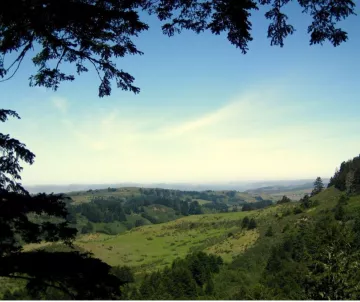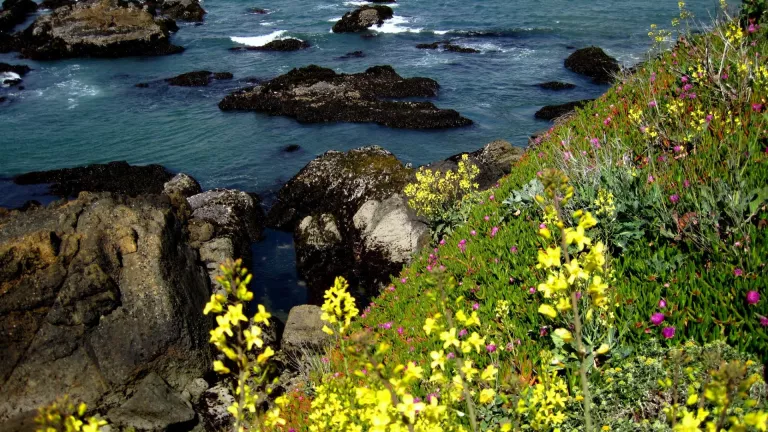
Butano State Park, situated in the Santa Cruz Mountains midway between Santa Cruz and Half Moon Bay, is prized for the diversity of its habitats and wildlife, and for the depth of its solitude. The park was created in 1957 to protect California’s coast redwoods from logging. Today’s visitors will discover a quiet canyon filled with towering second- and third growth- redwood trees, babbling creeks, and more. The human and natural histories of Butano State Park are closely linked. Though the indigenous people profoundly altered the natural landscape, they also remained intimate with it and dependent on it.
History
When the first Spanish explorers reached California after 1769, what is now Butano State Park lay within the territory of the Quiroste tribe—a large group of Native Americans who had settled the area many thousands of years before. The Quiroste hunted game, harvested plant foods, and in Autumn, burned large tracts of meadowland to manage the foods they ate, which improved plants that fed deer, pronghorn, and tule elk they hunted. Their oncemanaged landscape has reverted to wilderness. In the late 1860’s, three families resided in the area—the Jacksons, Taylors, and Mullens. These settlers and a man named Purdy Pharis logged the canyon, transforming the old-growth redwood forest into a variety of second- and third growth- habitats. Stumps and non-native vegetation are now the only signs of the logging that finally ended in the mid-1950s. Those who take the time to stroll along a park trail or set up a tent will discover the beauty and solace of one of California’s least-known parks. The park features 40 miles of hiking trails that wind through over 4,000 acres of canyons and uplands. Scattered throughout are patches of oak woodland, wet riparian, and sunny chaparral ecosystems. Among the diverse wildlife and plants in the park, hikers may spot woodpeckers, newts, and flowering calypso orchids in springtime.
Wildlife/Trees
Butano State Park harbors several distinct natural communities, each named for its most prominent natural features.

- Redwood/Douglas-Fir Forest. Much of the interior of Little Butano Canyon is dominated by towering redwoods and mossy Douglas-firs. Huckleberry bushes top the stumps of fallen redwoods. Redwoods hollowed out by ancient forest fires provide homes for bats. In wet weather, watch out for newts and banana slugs along the trails through the ground cover. Look for tiny winter wrens, nearly invisible until their resonant songs give away their locations among the logs and stumps.
- Coastal Grassland. The entrance area is grassland dominated by bush lupine and coyote brush. Blue-eyed grass and coastal suncups grow here. Sunrise and sunset are the best times to see such predators as bobcats and coyotes.
- Alder Woodland. The first half-mile of Little Butano Creek is shaded by alders. Under their canopy, blackberries, stinging nettles, elderberries, dogwoods and willows provide food and shelter for insects, small mammals, reptiles and a variety of birds. Trout, crayfish and endangered red-legged frogs live in and around the creek. Look for flowering currants, twinberries, thimbleberries, salmonberries, osoberries, gooseberries and baneberries.
- Oak Woodland. On the side of the canyon above the park entrance, grasslands give way to a grove of live oaks. Bright orange chanterelle mushrooms sprout from the decayed oak tree litter. The duff provides a garden bed for honeysuckle, coffeeberry, blackberry and poison oak. Look for arboreal salamanders on the ground and chickadees and warblers overhead.
